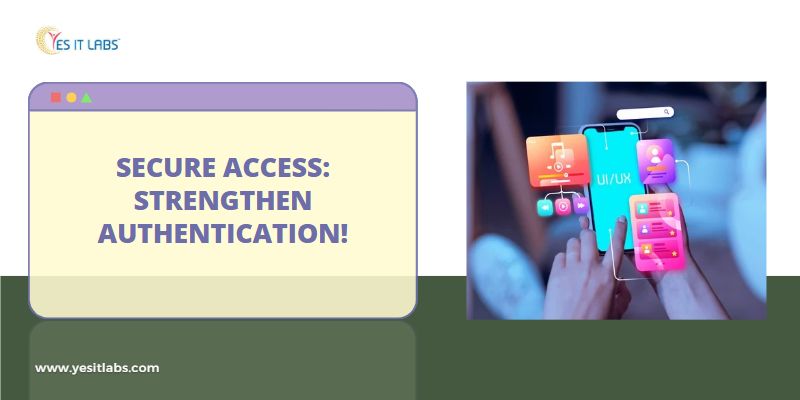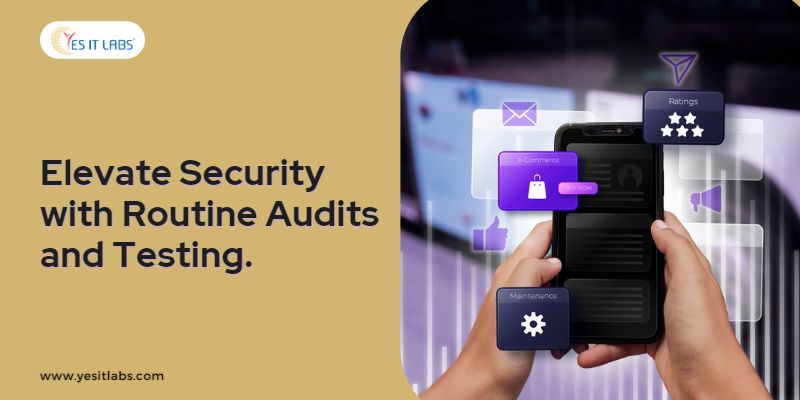Hybrid app development combines the flexibility of web technologies with the performance of native applications. As hybrid apps gain popularity, ensuring their security is crucial. This comprehensive guide will walk you through essential security best practices for hybrid app development, offering actionable insights to safeguard your app and its users.
Understanding Hybrid App Development Security Risks
Why Hybrid App Development Is Targeted
Hybrid app development uses web technologies wrapped in a native container, making them appealing targets for attackers. Their unique architecture introduces specific vulnerabilities, such as weaknesses in web views (which display web content within the app) and potential issues with third-party libraries. Recognizing these risks is the first step in addressing them.
Common Threats and Vulnerabilities
Hybrid app development faces several common threats, including:
- Cross-Site Scripting (XSS): Malicious scripts injected into web views can compromise app functionality and user data.
- Insecure Data Storage: Data stored on the device without proper encryption can be accessed by unauthorized users.
- Insecure APIs: APIs lacking proper security measures can be exploited to access sensitive data.
- Code Injection: Attackers may inject malicious code into the app if there are vulnerabilities.
Understanding these threats helps in developing effective security measures.
Implementing Secure Coding Practices
Use Secure APIs
APIs are a crucial part of hybrid app development, enabling communication between the web and native components. Ensure APIs are secure by:
- Authenticating: Use robust authentication methods like OAuth to control access.
- Encrypting: Protect data transmitted through APIs with strong encryption.
- Rate Limiting: Implement rate limits to prevent abuse and denial-of-service attacks.
Validate and Sanitize Input
Protect against attacks by:
- Validating Inputs: Always validate and sanitize user inputs to prevent malicious data from causing harm.
- Escaping Characters: Properly escape special characters to avoid injection attacks.
- Using Parameterized Queries: For database interactions, use parameterized queries to prevent SQL injection.
Avoid Hardcoding Sensitive Information
To protect sensitive data:
- Use Environment Variables: Store sensitive information in environment variables instead of hardcoding them in your app.
- Secure Storage Solutions: Utilize secure storage mechanisms provided by the platform to store sensitive data.
Enhancing Data Protection
Encrypt Data in Transit and at Rest
Encryption is vital for hybrid app development:
- In Transit: Use HTTPS and TLS to encrypt data during transmission, ensuring it remains confidential and tamper-proof.
- At Rest: Encrypt data stored on the device using strong algorithms to protect it from unauthorized access.
Implement Secure Storage Solutions
For secure data storage:
- iOS Keychain: Use iOS Keychain to store sensitive data like passwords and tokens securely.
- Android Keystore: Utilize Android Keystore for cryptographic operations and secure data storage.
Regularly Update and Patch Software
Stay secure by:
- Updating Dependencies: Regularly update third-party libraries and frameworks to include the latest security patches.
- Monitoring Vulnerabilities: Keep track of vulnerabilities in the libraries and tools you use and apply necessary patches.
Strengthening User Authentication
Implement Multi-Factor Authentication (MFA)
Add an extra layer of security with MFA:
- Combine Factors: Use multiple factors such as passwords, smartphones, and biometrics to authenticate users.
- Token-Based Authentication: Implement token-based methods like JWT for secure authentication.
Use Secure Password Practices
Ensure password security by:
- Enforcing Strong Passwords: Require passwords with a mix of characters, numbers, and symbols.
- Hashing Passwords: Use secure hashing algorithms like bcrypt or Argon2 for storing passwords.
Monitor Authentication Attempts
Detect suspicious activities by:
- Tracking Login Attempts: Log login attempts to identify patterns that might indicate attacks.
- Account Lockout: Implement lockout mechanisms after multiple failed attempts to prevent brute-force attacks.
Securing Data Exchange and Communication
Enforce Secure Communication Protocols
Protect data exchange with:
- HTTPS: Ensure all communication between the app and server is encrypted using HTTPS.
- TLS Configuration: Use the latest TLS protocols and ciphers to secure data in transit.
Protect Against Man-in-the-Middle Attacks
Mitigate MITM attacks with:
- Certificate Pinning: Implement certificate pinning to prevent attackers from using fraudulent certificates.
- Public Key Infrastructure (PKI): Use PKI to manage and verify digital certificates.
Validate SSL/TLS Certificates
Ensure certificate validity by:
- Checking Expiration: Make sure SSL/TLS certificates are valid and not expired.
- Verifying Chain: Confirm that the certificate chain is correctly validated.
Regular Security Audits and Penetration Testing
Conduct Regular Security Audits
Audits help uncover vulnerabilities:
- Internal Audits: Perform regular internal audits to assess your app’s security.
- External Audits: Engage third-party experts for unbiased evaluations and recommendations.
Perform Penetration Testing
Simulate attacks to find weaknesses:
- Manual Testing: Conduct manual penetration tests to identify complex vulnerabilities.
- Automated Testing: Use automated tools for routine scans and common vulnerability detection.
Review and Update Security Policies
Keep policies current by:
- Regular Reviews: Update security policies to address new threats and technological changes.
- Implementation: Ensure your team follows updated security policies and practices.
Educating Users and Developers
Train Developers on Security Best Practices
Educate your team by:
- Security Training: Provide training on secure coding practices and emerging threats.
- Awareness Programs: Promote understanding of common security issues and how to avoid them.
Educate Users on Security Awareness
Help users stay safe by:
- Phishing Awareness: Teach users to recognize and avoid phishing scams.
- Account Security: Encourage strong passwords and the use of MFA.
Encourage Regular Security Updates
Promote the importance of updates by:
- Update Notifications: Inform users about the need to keep apps and devices updated.
- Automatic Updates: Implement automatic updates to ensure users receive the latest security patches.
Leveraging Security Tools and Frameworks
Use Security Libraries and Frameworks
Enhance security with:
- Libraries: Utilize libraries that offer built-in protections against common vulnerabilities, which is crucial for hybrid app development.
- Frameworks: Leverage frameworks that provide comprehensive security features, enhancing the safety of your hybrid app development.
Integrate Threat Detection Solutions
Monitor and respond to threats by:
- Real-Time Monitoring: Use tools that provide real-time alerts for suspicious activities.
- Anomaly Detection: Implement solutions to detect unusual behavior indicative of security issues.
Implement Automated Security Testing
Streamline security assessments with:
- Static Analysis: Use tools to examine code for vulnerabilities before deployment.
- Dynamic Analysis: Employ tools to test app behavior and interactions in real time.
Conclusion
Securing hybrid app development requires a comprehensive approach that balances robust security practices with ongoing vigilance. By understanding the unique risks associated with hybrid app development and implementing effective security measures, you can protect your users and their data from potential threats. Prioritize security throughout the development lifecycle, stay informed about emerging threats, and regularly update your practices to ensure your app remains secure.
Hybrid app development companies should focus on integrating these best practices into their development process. By adopting these strategies, you can enhance the security of your hybrid app development services and build a resilient app that stands strong against the evolving landscape of cyber threats.
Whether you’re working with a mobile app development company or handling hybrid app development in-house, these practices are crucial for safeguarding your app. Stay proactive, prioritize security, and ensure that your hybrid app development is both effective and secure.









